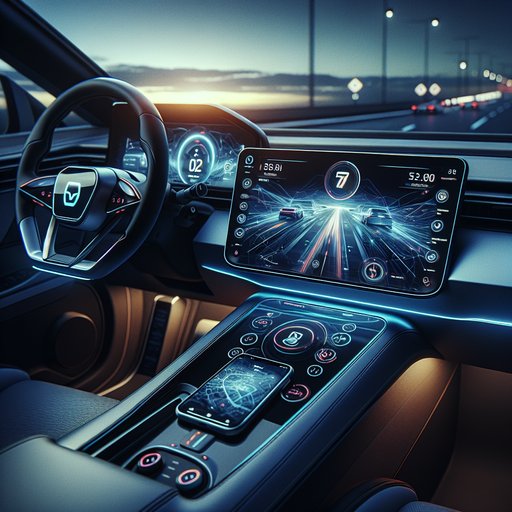
We spent a week in a 2024 BMW i4 eDrive40 to evaluate the latest iDrive 8.5 stack—its screens, voice assistant, native navigation, and smartphone integration—focusing on how the tech performs in real-world commuting and road trips.
Our test car ran BMW Operating System 8.5 on the Curved Display (12.3-inch cluster + 14.9-inch central touchscreen) with the optional head-up display. Hardware included a rotary iDrive controller, steering-wheel buttons, a wireless charging tray, and wireless Apple CarPlay/Android Auto, plus a Personal eSIM for 5G data and Digital Key Plus (UWB) support. Over eight days and 620 miles, we commuted across Los Angeles, ran highway loops to Palm Springs, and navigated dense downtown parking garages. We paired an iPhone 15 Pro (iOS 17) and a Google Pixel 8 (Android 14), tested cold and warm boots, OTA update behavior, and measured reconnection stability in areas with weak cellular coverage and heavy Wi‑Fi congestion.
iDrive 8.5’s QuickSelect tiles and persistent climate bar dramatically reduce digging through menus versus early 8.0 builds. The home screen can be configured with large widgets for nav, media, and energy. Touch response is snappy and animations are smooth, while the rotary controller remains useful for precise inputs on the move. The voice assistant (“Hey BMW”) handles plain‑language requests for climate, destinations, and drive modes reliably; it struggled only with niche POI names.
The screen’s anti‑glare coating works well in sun, though sunglasses can slightly mute HUD contrast. Native navigation is cloud-enhanced with real-time traffic and EV routing. On a 107-mile LA–Palm Springs trip at 72 mph, the planner predicted a 22-minute top-up; in practice we arrived with 4% more battery than forecast and skipped the stop. Charger search filters by power, connector, and provider, and you can send routes from the My BMW app.
Coverage of smaller independent DC sites is improving but POI details (amenities, stall count) are inconsistent compared with specialist apps. Offline maps can be preloaded, and OTA map updates occurred in the background without disrupting drives. Smartphone integration is a strong point. Wireless CarPlay connected in 10–12 seconds from door unlock, remained stable over potholes and heat, and resumed playback seamlessly after brief shopping stops; we saw one dropout in a congested garage that reconnected within 30 seconds.
Android Auto performance mirrored CarPlay. You can split the home screen to keep native nav visible alongside CarPlay, which is great for lane guidance. Two phones can be paired with one set as call priority. The wireless charger kept devices cool and held signal; USB‑C ports fast-charge modern phones and laptops, though they’re not as powerful as dedicated PD bricks.
Native Spotify and Audible apps work well if you prefer to skip mirroring. Connectivity and ownership layers are polished. The Personal eSIM enabled in‑car data without tethering and made the car a Wi‑Fi hotspot for passengers. Digital Key Plus on iPhone unlocked/started the car hands‑free reliably; Android UWB support worked after a quick setup.
The My BMW app is mature: remote preconditioning, charge scheduling, route planning, and OTA notifications all functioned as advertised. Note that some premium connected features move to a subscription after the included period, so factor that into long‑term costs. Overall, BMW’s latest infotainment stack blends quick, intuitive controls with robust smartphone and cloud features. The rotary controller and improved menu logic make day-to-day use easy, the voice assistant reduces distraction, and wireless mirroring is rock-solid.
Native EV routing is good enough to trust, but serious road‑trippers may still want third‑party charger apps for richer POI data. For buyers, we’d spec the HUD, wireless charging tray, and Connected Package; if you’re deeply invested in CarPlay/Android Auto, iDrive 8.5 supports that workflow gracefully.












